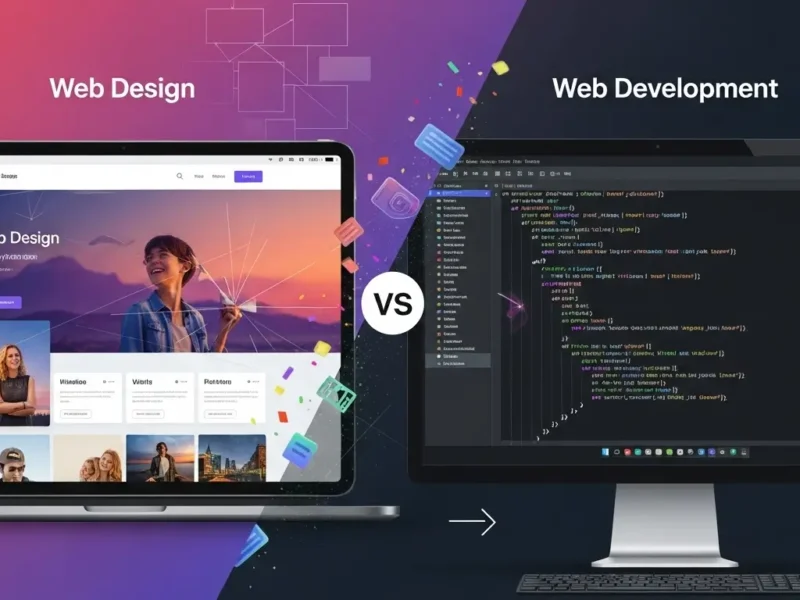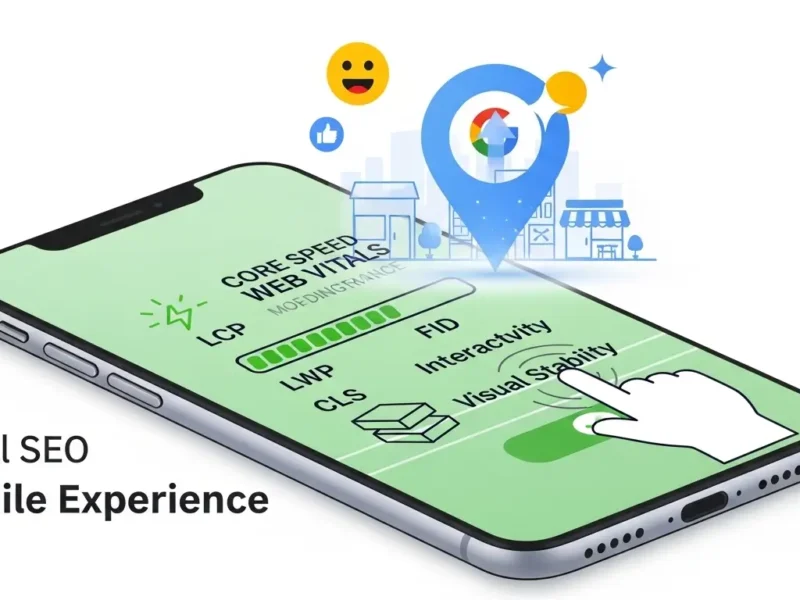In the competitive digital landscape, having a website is no longer enough. To truly succeed, to convert visitors into customers, and to foster lasting brand loyalty, your website needs to perform. But what exactly drives this performance? Often, the unsung heroes are User Experience (UX) and User Interface (UI) design. While frequently used interchangeably, UX and UI are distinct disciplines that work in powerful synergy.
Ignoring either can lead to high bounce rates, low conversions, and a stagnant online presence. Understanding their differences and, more importantly, how they collaborate is the key to unlocking your website’s full potential and significantly boosting its performance. This article will demystify UX and UI, explore their unique contributions, explain how they combine for maximum impact, and detail the tangible benefits they bring to your website’s bottom line.
What are UX and UI Design?
Before we dive into their combined power, let’s break down each concept individually. Think of it like building a house: one is about the structural integrity and livability, while the other is about the aesthetic appeal and interior decoration.
What is User Experience (UX) Design?
User Experience (UX) designis all about how a userfeelswhen interacting with your website or digital product. It’s a holistic approach that focuses on the overall journey a user takes – from their initial thought of needing a product or service, through finding your site, interacting with its content, completing an action (like a purchase or signup), and even post-interaction support.
UX designers are essentially problem-solvers. Their primary goal is to make the entire interaction as efficient, enjoyable, and relevant as possible. This involves deep dives into understanding user needs, behaviors, motivations, and pain points.
Key activities in UX design include:
- User Research: Conducting surveys, interviews, and usability tests to understand the target audience.
- Information Architecture (IA): Structuring and organizing content in a logical, intuitive way (e.g., navigation menus, site maps).
- Wireframing: Creating low-fidelity outlines of a page or interface to plan layouts and content placement.
- Prototyping: Building interactive models to simulate user flows and test functionality.
- Usability Testing: Observing real users interacting with the design to identify areas for improvement.
- User Journey Mapping: Visualizing the steps a user takes to achieve a goal on your website.
In essence, UX design ensures your website is useful, usable, and desirable. It’s the underlying blueprint that dictates the user’s satisfaction and efficiency.
What is User Interface (UI) Design?
User Interface (UI) design, on the other hand, is thelook and feelof your website – the visual elements and interactive components that users directly engage with. If UX is about how the house functions, UI is about its curb appeal and interior decor. UI designers are the visual artists and interaction specialists who bring the UX vision to life.
Their focus is on crafting an interface that is aesthetically pleasing, intuitive, and consistent. This includes everything from the smallest button to the overall color scheme.
Key activities in UI design include:
- Visual Design: Choosing color palettes, typography, imagery, and iconography that align with brand identity and appeal to the target audience.
- Layout and Grids: Arranging elements on a page for optimal readability and visual hierarchy.
- Interactive Elements: Designing buttons, forms, sliders, and other interactive components for clarity and ease of use.
- Animations and Transitions: Implementing subtle movements to guide user attention and enhance engagement.
- Brand Consistency: Ensuring all visual elements align with the brand’s identity across the entire website.
- Responsive Design: Adapting the interface to display optimally across various devices (desktops, tablets, mobile phones).
UI design ensures your website is beautiful, clear, and easy to navigate visually. It’s the tangible, visible part of the website that users interact with.
The Crucial Differences: UX vs. UI
While often conflated, the fundamental difference between UX and UI can be summarized simply:
- UX design is about thefunctionalityandoverall experience(the journey).
- UI design is about thevisual presentationandinteractivity(the aesthetics and interface).
Think of a beautifully designed kettle. The UI designer makes sure it looks sleek, has an ergonomic handle, and the “on” switch is visually appealing. The UX designer ensures it boils water quickly, doesn’t drip, is easy to fill, and pours smoothly without splashing. You can have a stunning-looking kettle (great UI) that’s impossible to pour without spilling (poor UX), or a highly functional kettle (great UX) that’s an eyesore (poor UI). Neither is ideal.
How UX and UI Work Together
The true power emerges when UX and UI designers collaborate seamlessly. They are not separate entities, but rather two sides of the same coin, each indispensable for creating a truly high-performing website.
A great UX ensures the website is structured logically and provides a smooth, intuitive path for users to achieve their goals. Once the UX blueprint is established, the UI designer steps in to craft the visual elements that make that path attractive, engaging, and easy to follow.
- UX provides the map; UI provides the legible, appealing signage on that map.
- UX defineswhatthe user needs to do; UI defineshowthe user will do it visually.
For example, a UX designer might determine that users need a clear “Add to Cart” button on product pages for an e-commerce site. The UI designer then decides its color, size, placement, hover effects, and typography to make it visually prominent and clickable. If the UX research indicates users are confused by complex forms, the UI designer will simplify the visual layout, use clear labels, and add helpful visual cues to guide them.
This iterative process of research (UX) informing visual design (UI), followed by testing and refinement, leads to a digital experience that is both highly functional and deeply engaging.
Boosting Website Performance: Tangible Benefits
Investing in professional UX and UI design isn’t just about making your website look nice; it directly translates to measurable improvements in your website’s performance and, ultimately, your business success.
1. Improved User Engagement
A well-designed UX ensures users can easily find what they’re looking for, reducing frustration. A compelling UI makes the interaction enjoyable and visually appealing. This leads to:
- Lower Bounce Rates: Users stay on your site longer because they find it easy to navigate and pleasant to use.
- Increased Time on Page: Engaging content, intuitively laid out, encourages deeper exploration.
- Higher Page Views: Clear internal linking and a logical site structure (UX) enhanced by appealing visual cues (UI) guide users to explore more pages.
2. Higher Conversion Rates
This is where the rubber meets the road for most businesses. Effective UX and UI design directly impact your conversion funnel:
- Streamlined User Journeys: UX design identifies and eliminates friction points in conversion paths (e.g., checkout processes, lead forms).
- Clear Calls-to-Action (CTAs): UI design ensures CTAs are visually prominent, unambiguous, and compelling, encouraging clicks.
- Reduced Cart Abandonment: An intuitive, reassuring checkout process built on strong UX principles and presented with clear UI elements minimizes drop-offs.
- Enhanced Trust and Credibility: A professional, polished UI coupled with a reliable, error-free UX signals trustworthiness to potential customers.
3. Enhanced SEO Rankings
While not a direct ranking factor in the same way keywords are, Google increasingly prioritizes user experience. Good UX and UI positively influence critical SEO metrics:
- Core Web Vitals: Elements like Loading Performance (LCP), Interactivity (FID), and Visual Stability (CLS) are heavily influenced by UI choices (e.g., image optimization, responsive design) and UX structure.
- Dwell Time: When users find your site easy to use and valuable, they stay longer, signaling to Google that your content is high-quality.
- Lower Bounce Rates: Fewer people leaving your site immediately tells search engines your site is relevant and satisfying.
- Accessibility: A well-designed UX/UI considers accessibility, which not only broadens your audience but also aligns with search engine guidelines.
4. Stronger Brand Identity and Trust
Your website is often the first interaction a customer has with your brand.
- Consistent UI: A cohesive visual identity across all pages builds strong brand recognition and reinforces your brand’s personality.
- Positive UX: A seamless, enjoyable experience fosters customer satisfaction and builds loyalty, leading to positive word-of-mouth and repeat business. Users learn to trust your brand because they trust your website.
5. Reduced Development Costs & Time (Long-Term)
Investing in robust UX research and UI prototyping upfront can save significant time and money down the line, particularly when embarking on new web development services or significant website redesigns.
- Fewer Reworks: Identifying and solving potential usability issues in the design phase is far cheaper than fixing them after development. This proactive approach minimizes costly revisions during the actual coding phase.
- Clearer Requirements: Well-defined UX flows and UI mockups provide unambiguous guidance for developers, reducing misinterpretations and scope creep. This ensures that the web development services deliver precisely what the user experience demands, without unnecessary delays or budget overruns.
Implementing UX and UI Best Practices
To harness the power of UX and UI for your website, consider these actionable steps:
For User Experience (UX):
- Know Your Audience: Develop detailed user personas based on research.
- Map User Journeys: Understand the typical paths users take on your site and identify potential roadblocks.
- Prioritize Simplicity: Eliminate unnecessary steps or information overload.
- Conduct Usability Testing: Get real users to interact with your site and observe their behavior.
- Iterate Based on Data: Use analytics and user feedback to continuously improve the user experience.
For User Interface (UI):
- Maintain Visual Consistency: Use a style guide for fonts, colors, buttons, and spacing.
- Prioritize Visual Hierarchy: Guide the user’s eye to the most important elements using size, color, and placement.
- Ensure Responsive Design: Your website must look and function flawlessly on all devices.
- Focus on Accessibility: Design for users with disabilities (e.g., sufficient color contrast, keyboard navigation).
- Use Clear and Concise Language: Complement your UI with effective microcopy.
- Optimize Load Times:Fast-loading interfaces enhance user satisfaction and SEO.
Conclusion
In the dynamic digital world, your website is more than just an online brochure; it’s a powerful business tool. To truly boost your website performance, drive conversions, and establish a strong online presence, a holistic approach that embraces both User Experience (UX) and User Interface (UI) design is non-negotiable.
UX lays the foundation for a useful and intuitive journey, while UI provides the beautiful, engaging interface that makes that journey a pleasure. Together, they create an experience that keeps users coming back, converts prospects into loyal customers, and signals to search engines that your website offers genuine value. Invest in both, and watch your website transform from a mere presence into a powerful performance engine.



